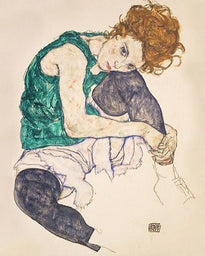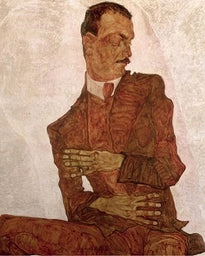Nitsch: Spaces of Color Book
THAMES & HUDSON - Hardback
Austrian avant-garde artist Hermann Nitsch is known for his visceral performance art pieces—often based on the ritualistic practice of sacrifice—which he conceived after experiencing World War II as a child. His performances, however, are not his only contribution to the art world. Around 1960, he produced his first “splatter” painting, a form of action painting that is primarily concerned with the substance of the paint. Nitsch: Spaces of Color follows the artist through the development of his painterly works from the early 1960s to the present day, tracing his investigation of paint from one painting to the next.
Focusing on the characteristics of Nitsch’s various work cycles, the authors examine the artist’s first splatter paintings, his floor splatter paintings from the Red Cycle in 1995, the works from his Six-Day Play in 1989, and his yellow Resurrection Cycle in 2002. While one color dominates in Nitsch’s monochrome works, others reveal an explosion of colors. The paint, the authors show, is splattered, sprayed, or even possibly applied in liquid form or impasto. The essays also speculate that Nitsch may both use a paintbrush or smear the paint with his hands. Using 150 color images of these works, this book illustrates throughout that Nitsch’s focal point is the exploration of the state of the paint itself, which constantly varies between liquid and solid.
Marking Nitsch’s eightieth birthday, Nitsch: Spaces of Color is a fascinating exploration of this outstanding experimental artist.
Focusing on the characteristics of Nitsch’s various work cycles, the authors examine the artist’s first splatter paintings, his floor splatter paintings from the Red Cycle in 1995, the works from his Six-Day Play in 1989, and his yellow Resurrection Cycle in 2002. While one color dominates in Nitsch’s monochrome works, others reveal an explosion of colors. The paint, the authors show, is splattered, sprayed, or even possibly applied in liquid form or impasto. The essays also speculate that Nitsch may both use a paintbrush or smear the paint with his hands. Using 150 color images of these works, this book illustrates throughout that Nitsch’s focal point is the exploration of the state of the paint itself, which constantly varies between liquid and solid.
Marking Nitsch’s eightieth birthday, Nitsch: Spaces of Color is a fascinating exploration of this outstanding experimental artist.
N/A
Author: KLAUS ALBRECHT SCHRÖDER AND ELSY LAHNER
Format : Hardback
ISBN: 9783777432564
Size: 11.5 x 1 x 9.5 inches
Pages: - 230
Publisher: THAMES & HUDSON
3-5 working days to Indian addresses. Please check pin code to confirm if we deliver to your location. For international delivery times please allow up to 3 weeks. For further details please refer to Shipping . If you don't like it we will be happy to give you a refund if you return the item within 14 days of delivery. For further information please refer to our returns policy. Returns.
Product Code: IDB-5563
Product Code:
IDB-5563




















